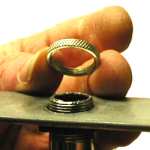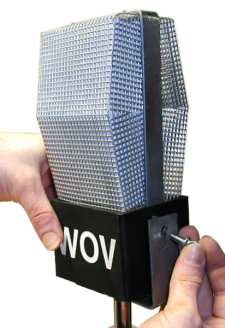 |
|
johnnyace |
RCA 44 Prop Microphones
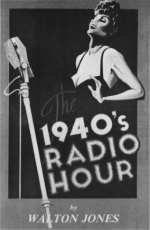
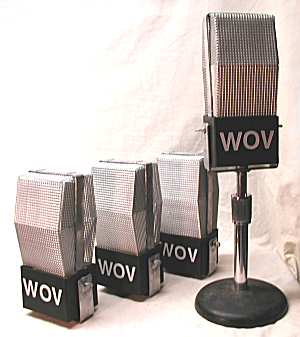 These stage prop replicas were built for a musical production of The 1940's Radio Hour to hide my use of modern wireless transmitters. They're rugged enough to handle the rigors of everyday performance abuse, yet are affordable and relatively simple to construct.
These stage prop replicas were built for a musical production of The 1940's Radio Hour to hide my use of modern wireless transmitters. They're rugged enough to handle the rigors of everyday performance abuse, yet are affordable and relatively simple to construct.
They disassemble quickly by removing just two thumbscrews, allowing easy access to the wireless transmitters inside while keeping them securely contained when onstage.
The prop shells consist of only a few parts: the base which houses the transmitter, the grille which hides the mic, and the yoke which attaches to a mic stand. Thumbscrews tie the assembly together.
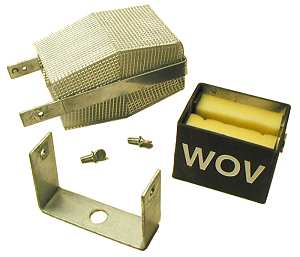 The base and grille are constructed from PVC and polyethylene plastic to help reduce radio interference, and the soft foam interior can comfortably accommodate most any modern pocket-sized wireless transmitter.
The base and grille are constructed from PVC and polyethylene plastic to help reduce radio interference, and the soft foam interior can comfortably accommodate most any modern pocket-sized wireless transmitter.
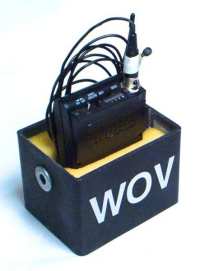 The sturdy metal yoke mounts firmly onto a standard threaded mic stand using two lock-rings and eliminates any shaking or other distracting movement.
The sturdy metal yoke mounts firmly onto a standard threaded mic stand using two lock-rings and eliminates any shaking or other distracting movement.
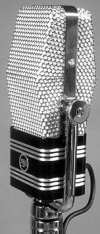 Design & Construction
Design & Construction
The original RCA 44 ribbon microphone was the high-end workhorse of its day, used extensively both on stage and in the studio. Known for its distinctive shape and excellent vocal reproduction, it became a favorite of crooners such as Bing Crosby who reportedly carried his own personal 44 with him to gigs in an effort to consistently sound his best.
This replica design was based largely on an illustration which mistakenly drew the yoke thumbscrews too low. Since it is the iconic angular grille that most people recognize, I reasoned that the small change in thumbscrew placement would go unnoticed and would greatly simplify construction. For broadcast-quality RCA mic shells and precision replacement parts, visit Audio Engineering Associates.
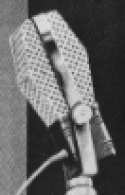
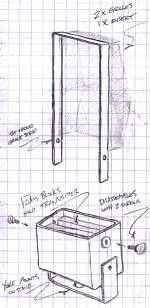
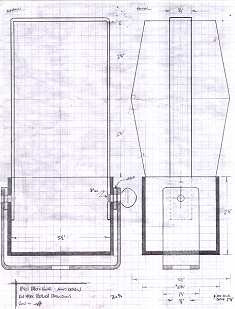 My early sketches studied the simplest and sturdiest forms of construction to allow convenient maintenance of the wireless transmitters on a daily basis. Once the assembly design was complete, dimensions were taken of both the original RCA 44 and several styles of wireless lavalier transmitters. A compromise was then reached between construction simplicity and replica accuracy while accounting for a wide range of transmitter models.
My early sketches studied the simplest and sturdiest forms of construction to allow convenient maintenance of the wireless transmitters on a daily basis. Once the assembly design was complete, dimensions were taken of both the original RCA 44 and several styles of wireless lavalier transmitters. A compromise was then reached between construction simplicity and replica accuracy while accounting for a wide range of transmitter models.
The finished props are quite believable from only a few feet away and read extremely well from stage. The design is straightforward enough to be built using just a few shop tools and material cost is negligible; construction labor is the only major expense.
Copyright © John R Anderson. All rights reserved.
